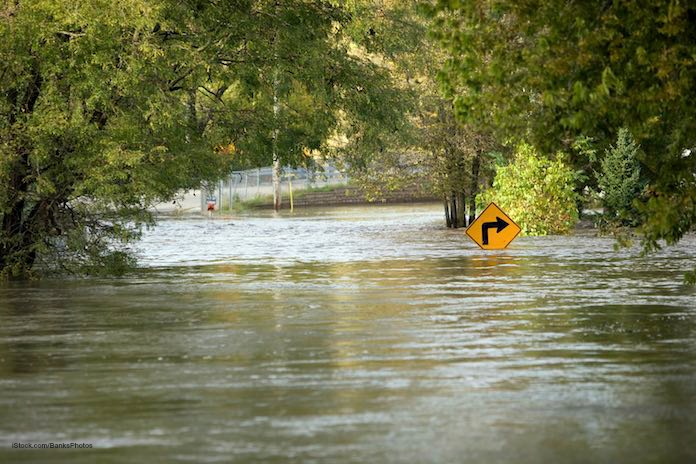The FDA is warning growers, distributors, and consumers that many types of food should be destroyed after a flood. After Hurricanes Harvey and Irma wreaked havoc on many areas of the southern U.S., keeping your family’s food safe is critical.

Some foods that have been exposed to flood waters should not be eaten. Flood waters can contain sewage, hazardous chemicals, heavy metals, parasites, and pathogenic bacteria and viruses. If the edible portion of a crop is exposed to flood waters, they must be destroyed. There is “no practical method of reconditioning the edible portion of a crop that will provide a reasonable assurance of human food safety,” according to the notice.
All fresh fruits and vegetables that have been in contact with flood water can’t be adequately cleaned and should be destroyed. And fresh fruits and vegetables that have begun to spoil because they were not refrigerated sold also be destroyed. Any refrigerated and frozen foods, including beverages, that have been immersed in flood waters must be destroyed. And of course any of these perishable foods that were not kept below 40°F should be destroyed.
Foods packed in plastic, paper, cardboard, cloth, and other permeable containers can’t be salvaged after a flood. And foods packed with screw-tops, screw-caps, snap-lids, crimped-caps (soda pop bottles), twist-caps, flip-top, snap-open, and similar type closures that have been submerged in flood waters cannot be reconditioned.
Some hermitically sealed cans may be reconditioned. Those cans have a top and bottom double seam. Consumers can clean any food cans that have not been damaged and aren’t leaking, bulging, or dented.
First, remove the paper label and discard. The label can hold bacteria and other pathogens. Wash the cans or retort pouches with safe water. Then sanitize the items by boiling in clean water for 2 minutes, or immerse in a solution of 1 tablespoon liquid chlorine bleach per 1 gallon of drinking water for 15 minutes. Air dry the cans and pouches for at least 1 hour before opening them or storing them.
Know the symptoms of food poisoning and be very aware of them after a natural disaster. Most people get sick within a few days if they have been exposed to pathogenic bacteria. Symptoms usually include nausea, vomiting, diarrhea, and abdominal cramps. If you do get sick, see your doctor.




